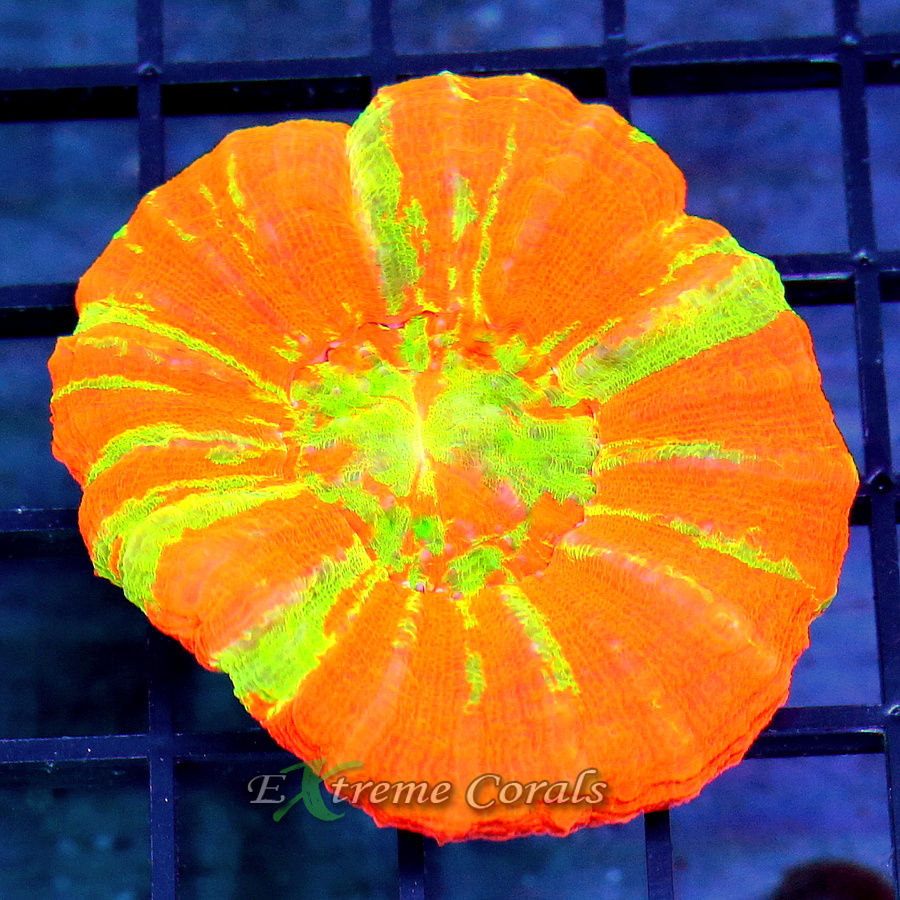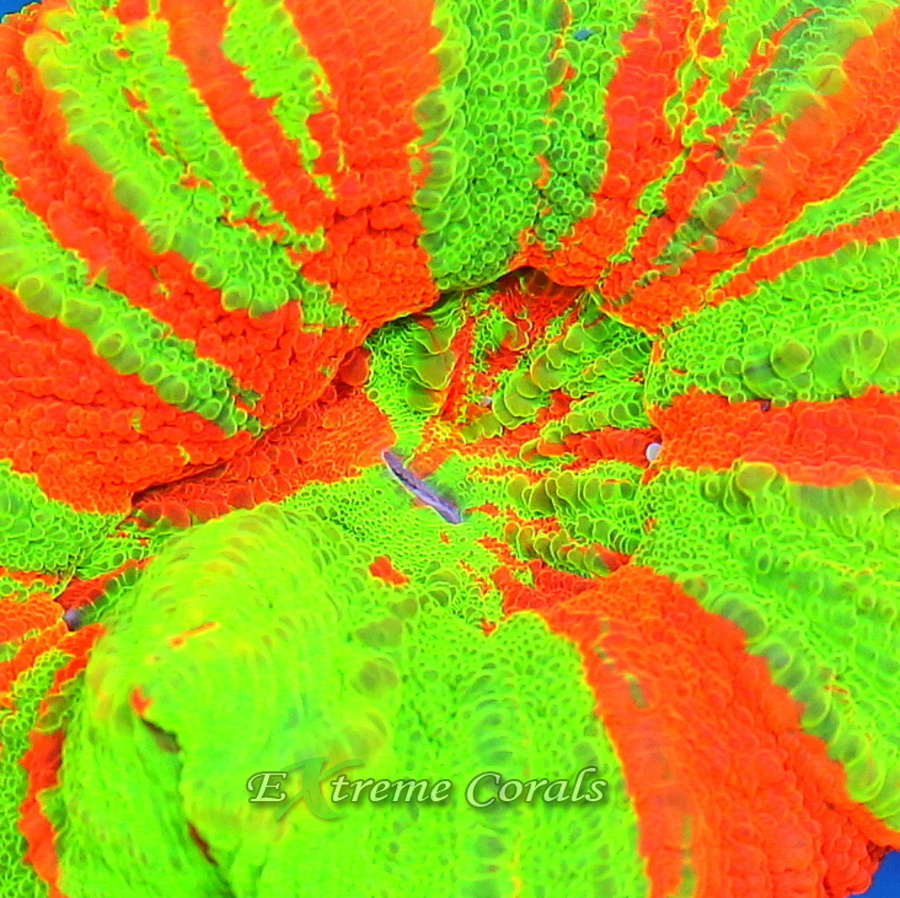Extreme Corals News and Updates
The Rarity and Beauty of Scolymia Corals: What Makes Them Unique?
Explore the uniqueness of scolymia corals and their beauty in our blog 'The Rarity and Beauty of Scolymia Corals: What Makes Them Unique?'.
Explore the world of Scolymia corals, also known as doughnut corals, prized for their vibrant colors and unique circular shape. Learn about their characteristics, habitat, care tips, and the challenges they face in today's ocean environments. Discover the importance of conservation efforts to preserve these rare and beautiful marine organisms for generations to come.
by scott Shiles • April 08, 2024
Introduction to Scolymia Corals

Scolymia corals, also known as doughnut corals, are prized for their vibrant colors and unique appearance. These LPS corals are highly sought after by reef tank enthusiasts for their stunning beauty and rarity. Scolymia corals can be found in a variety of color variations, including bright oranges, pinks, greens, and blues, adding a pop of color to any aquarium. These corals are known for their distinct circular shape, resembling a colorful doughnut underwater. In addition to their striking appearance, Scolymia corals are relatively hardy and can thrive in a well-maintained aquarium environment.
Characteristics of Scolymia Corals
Scolymia corals are known for their vibrant colors and distinct patterns. They have a round shape with tentacles extending from their center, resembling a flower. These corals come in various hues such as green, red, orange, and even rainbow color combinations. Scolymia corals are highly sought after by reef enthusiasts for their striking appearance and are often considered a prized addition to marine aquariums.
Color Varieties and Patterns
Scolymia corals come in a variety of striking colors and patterns. These corals can exhibit vibrant hues like red, orange, green, and blue, adding a pop of color to any aquarium. Some may even showcase intricate patterns, creating a visually appealing display in your tank. Whether you prefer solid colors or intricate designs, Scolymia corals offer a unique and beautiful addition to your underwater ecosystem.
Habitat and Environment
The coral can be found throughout the Pacific, such as in Australia, with a rare species found in Indonesia. Nowadays, most hobbyists find the coral on reef slopes of the Great Barrier Reef. They prefer areas with moderate to high water flow and ample sunlight for photosynthesis. These corals can thrive in both sandy and rocky substrates, adding a vibrant touch to the ocean floor.
Importance of Scolymia Corals in the Ecosystem
Scolymia corals play a crucial role in the ecosystem as they provide habitats for various marine creatures. They help maintain the balance of the underwater environment by offering shelter and protection to small fish and invertebrates. Additionally, these corals contribute to the overall biodiversity of the reef, enhancing its resilience to environmental changes.
Care and Maintenance of Scolymia Corals
Scolymia corals are quite hardy and require minimal care to thrive in your aquarium. Here are some essential tips for maintaining the health and beauty of your Scolymia corals:
Ensure proper lighting: Scolymia corals need moderate to high lighting to photosynthesize and grow. Place them under LED lights or T5 fixtures for optimal health.
Maintain stable water parameters: Keep the water temperature between 75°F to 80°F and maintain stable levels of pH, alkalinity, and salinity.
Regular water changes: Perform regular water changes to remove excess nutrients and maintain water quality.
Feed your corals: Scolymia corals can benefit from supplemental feedings of small meaty foods like shrimp or fish a few times a week.
Avoid high flow: Scolymia corals prefer low to moderate water flow to prevent tissue damage.
Monitor for pests: Keep an eye out for pests like flatworms or nudibranchs, which can harm your corals. Remove them promptly if detected.
Reproduction and Growth
Scolymia corals reproduce by releasing eggs and sperm into the water for fertilization. The fertilized eggs develop into larvae, eventually settling on the ocean floor to form new colonies. Scolymia corals grow slowly, adding layers to their skeletons over time. These corals require stable water conditions and proper lighting to thrive and reproduce successfully.
Challenges Faced by Scolymia Corals
Scolymia corals face challenges like ocean pollution, overfishing, and coral bleaching due to rising sea temperatures. These factors threaten their survival and can lead to a decline in their populations. Efforts to protect and preserve these corals are essential to ensure their continued existence in our oceans.
Conservation Efforts for Scolymia Corals
Efforts are being made to protect Scolymia corals, which are facing threats due to habitat destruction, over-collection, and climate change. Conservation initiatives focus on monitoring coral populations, establishing marine protected areas, educating the public about the importance of coral reefs, and implementing sustainable diving and snorkeling practices to minimize damage to these delicate ecosystems. By taking these steps, we can help preserve the beauty and rarity of Scolymia corals for future generations to enjoy.
Appreciating the Rarity and Beauty of Scolymia Corals
Scolymia corals are not just beautiful, but also rare due to their slow growth rate and limited availability in the wild. Their vibrant colors and unique patterns make them highly sought after by coral enthusiasts. Appreciating the rarity and beauty of Scolymia corals can encourage conservation efforts to protect these precious marine organisms for future generations to enjoy.

